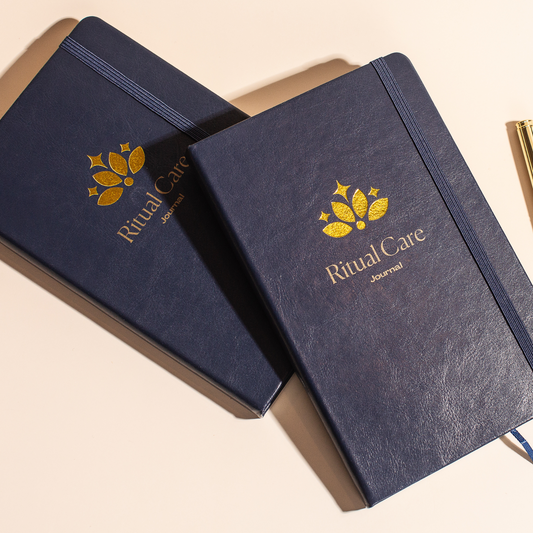Back in my twenties, I spent a lot of time writing in my journal, usually about boys. Then I had an epiphany: I realized that the quality of my relationships with men were inversely related to the amount of time I spent writing in my journal. If the relationship was healthy, I was off happily living my life, not sitting on my window seat, writing about how happy I was. But if the relationship was dysfunctional, I wrote . . . and wrote . . . and wrote.
When I look back now at those journals, I have to laugh at myself because every whining, complaining story I told had me as the heroine of my “poor me” story. The guy was always a liar/cheater/loser/wimp/alcoholic/abuser/narcissist/jerk. They were all wrong. But me, I was always right.
Do you hear the ring of “victim story” here? Bingo. That would be me in my twenties—a hot mess who blamed everyone else for the messes I was creating.
Now I don’t write in a journal anymore. I blog instead. But I notice the internal journal I write to myself
sometimes. And even after all these years, sometimes the story flips into “poor me,” and that’s always my signal to shine a light on my victim story, because every time (and I mean every time, with no exceptions), I can be guaranteed to find some juicy morsel of soul growth buried, often unconsciously, in the muck of my victim story.
She said, “Lissa, you can do all the spiritual growth work you want, but if you’re still feeling hurt and blaming other people for that hurt, you’re not really doing the inner work on the beliefs that are causing you to feel hurt. If you think anyone has the power to hurt you, you’re confused.”
Oh . . .
She went on to ask me what the hurt little girl in the backseat of the car of Lissa was saying. What belief was making her feel hurt? What stories was she telling herself? That was where the real gold could be unearthed.
Ouch.
She invited me to question that belief. “It’s never enough. It’s too much.” What’s true and not true about this belief?
1. Identify your belief and ask yourself “Is it true?” Your Small Self will tend to say “Yes, it’s true. That belief is rock solid true.” But simply asking the question can begin to loosen the belief’s grip on you.
2. Can you be absolutely sure this belief is rock solid true?
In other words, can you think of even one instance when this belief is not true? Many of our beliefs were inherited from childhood. We took them on just like we took on the belief that our names are who we are, even though our names are just a mental construct given to us by our parents. So is it true that I’m never enough? Is it true that I’m too much? Can I be absolutely sure this is true? Well . . . no.
3. How do you feel when you believe this belief to be true?
When I felt into the feeling of “It’s never enough. I try and try, and then I’m too much, and people leave,” I felt small, disempowered, and victimized. My gut felt twisted. I felt sad. If you get weepy when you feel what it feels like to believe this belief, chances are good that this belief is not serving you, and you’d feel more free if you could let it go. Which takes us to the next step.
4. Who would you be without this belief? (Or as Martha Beck puts it, what if you had a little mini stroke and the only thing you lost was your ability to believe this belief?)
Most of us felt liberation, a profound sense of calm. It would feel like a million pounds off your shoulders to let go of the belief.
5. Turn the belief around.
The turnaround can come in a variety of forms. It may be the direct opposite of whatever belief leaves you feeling like a victim. Often, the turnaround can be turned around to the self, to the other, or to the opposite. For example, if your belief is, “Mom didn’t love me enough,” turnarounds might be, “I didn’t love me enough” or “I didn’t love Mom enough” or “Mom loved me just the right amount.”
Oh . . .
Many years ago, I did this process with Martha Beck around my belief, “I have to be in control in the hospital.” After two hours of Martha battling my thick, conditioned medicalized ego, the turnaround became, “God is in control in the hospital.”
Oh . . .
When you find the right turnaround, it has that kind of effect on you. You feel busted. And liberated. Pissed and giddy—all at the same time. Your ego is annoyed. Your soul is singing!
When you’re sad and grieving, when you feel hurt, disappointed, betrayed, or angry, you need to feel all of your feelings without glossing over them. Emotions are just like labor contractions. They move through you as an energy form. If you resist them, they hurt more, but if you just soften into them, they pass in waves that usually last less than 90 seconds.
I’ve once heard someone try to apply The Work to a grieving widow who had lost her husband a week earlier. “You’re stuck in your victim story. You’re only grieving because of your belief that your husband should still be here. You should do The Work on your belief.” In my opinion, that’s not helpful. That’s just cruel. We all feel pain when we lose someone or something we love, and that pain can last for a long time. Grief needs its own medicine, and telling someone to get out of their victim story when they’re grieving is not loving or compassionate. Sometimes we just need to hold each other tenderly as we soften into the pain.
This year, I lost six people I love within six months. The grief has practically leveled me. But I still see it through the lens of pronoia. As much as it hurts, I don’t feel like a victim. I see how my heart is getting broken open, my edges are softening, I’m growing to be come compassionate, I’m learning to rely more on others, I’m humbled by my grief, and I sense the love that is all around me, even as life falls apart.
Getting out of your victim story is an invitation to a more expansive consciousness, one that sees that all of life’s experiences, even the painful ones, help us grow as souls. When the weight of the victim story lifts, the heart opens, compassion blossoms, and opportunities for awakening arise naturally.
When I look back now at those journals, I have to laugh at myself because every whining, complaining story I told had me as the heroine of my “poor me” story. The guy was always a liar/cheater/loser/wimp/alcoholic/abuser/narcissist/jerk. They were all wrong. But me, I was always right.
Do you hear the ring of “victim story” here? Bingo. That would be me in my twenties—a hot mess who blamed everyone else for the messes I was creating.
Now I don’t write in a journal anymore. I blog instead. But I notice the internal journal I write to myself
sometimes. And even after all these years, sometimes the story flips into “poor me,” and that’s always my signal to shine a light on my victim story, because every time (and I mean every time, with no exceptions), I can be guaranteed to find some juicy morsel of soul growth buried, often unconsciously, in the muck of my victim story.
Can Others Really Hurt You?
A while back, I was talking about this with Byron Katie, a spiritual teacher I met at Esalen. In front of 140 other people, I asked her a question. “I’ve done a lot of work on myself, and I’ve made enough progress in my spiritual growth to be able to witness the part of me that still gets hurt and feels victimized. But what do I do about this hurt little girl that sits in the backseat of the car of Lissa and cries when she doesn’t get her way?”She said, “Lissa, you can do all the spiritual growth work you want, but if you’re still feeling hurt and blaming other people for that hurt, you’re not really doing the inner work on the beliefs that are causing you to feel hurt. If you think anyone has the power to hurt you, you’re confused.”
Oh . . .
She went on to ask me what the hurt little girl in the backseat of the car of Lissa was saying. What belief was making her feel hurt? What stories was she telling herself? That was where the real gold could be unearthed.
Doing the Inner Work
So I found the belief. It was something like, “It’s never enough. I try and try and try, and no matter how much I try, it’s never enough. But then wait! I tried so hard that I went too far! Now I’m too much. Not enough. Too much. Not enough. Too much. I’ll never get it right, and if I don’t, I’ll lose those I love.”Ouch.
She invited me to question that belief. “It’s never enough. It’s too much.” What’s true and not true about this belief?
Steps to Assessing and Changing Your Core Beliefs
Byron Katie’s “The Work” can be quite helpful in situations like this.1. Identify your belief and ask yourself “Is it true?” Your Small Self will tend to say “Yes, it’s true. That belief is rock solid true.” But simply asking the question can begin to loosen the belief’s grip on you.
2. Can you be absolutely sure this belief is rock solid true?
In other words, can you think of even one instance when this belief is not true? Many of our beliefs were inherited from childhood. We took them on just like we took on the belief that our names are who we are, even though our names are just a mental construct given to us by our parents. So is it true that I’m never enough? Is it true that I’m too much? Can I be absolutely sure this is true? Well . . . no.
3. How do you feel when you believe this belief to be true?
When I felt into the feeling of “It’s never enough. I try and try, and then I’m too much, and people leave,” I felt small, disempowered, and victimized. My gut felt twisted. I felt sad. If you get weepy when you feel what it feels like to believe this belief, chances are good that this belief is not serving you, and you’d feel more free if you could let it go. Which takes us to the next step.
4. Who would you be without this belief? (Or as Martha Beck puts it, what if you had a little mini stroke and the only thing you lost was your ability to believe this belief?)
Most of us felt liberation, a profound sense of calm. It would feel like a million pounds off your shoulders to let go of the belief.
5. Turn the belief around.
The turnaround can come in a variety of forms. It may be the direct opposite of whatever belief leaves you feeling like a victim. Often, the turnaround can be turned around to the self, to the other, or to the opposite. For example, if your belief is, “Mom didn’t love me enough,” turnarounds might be, “I didn’t love me enough” or “I didn’t love Mom enough” or “Mom loved me just the right amount.”
Oh . . .
Many years ago, I did this process with Martha Beck around my belief, “I have to be in control in the hospital.” After two hours of Martha battling my thick, conditioned medicalized ego, the turnaround became, “God is in control in the hospital.”
Oh . . .
When you find the right turnaround, it has that kind of effect on you. You feel busted. And liberated. Pissed and giddy—all at the same time. Your ego is annoyed. Your soul is singing!
Don’t Bypass Your Feelings
This process is a tool for liberation, which can unhook you from limiting beliefs that hold you back and cause you to suffer unnecessarily. But it’s not meant to be some sort of spiritual bypass technique.When you’re sad and grieving, when you feel hurt, disappointed, betrayed, or angry, you need to feel all of your feelings without glossing over them. Emotions are just like labor contractions. They move through you as an energy form. If you resist them, they hurt more, but if you just soften into them, they pass in waves that usually last less than 90 seconds.
I’ve once heard someone try to apply The Work to a grieving widow who had lost her husband a week earlier. “You’re stuck in your victim story. You’re only grieving because of your belief that your husband should still be here. You should do The Work on your belief.” In my opinion, that’s not helpful. That’s just cruel. We all feel pain when we lose someone or something we love, and that pain can last for a long time. Grief needs its own medicine, and telling someone to get out of their victim story when they’re grieving is not loving or compassionate. Sometimes we just need to hold each other tenderly as we soften into the pain.
Don’t Skip Setting Boundaries
This process is also not meant to strip you of your discernment or disable your impulse to set clear boundaries when someone violates you. When someone betrays you or loses your trust, you can do The Work on your limiting beliefs and still establish boundaries that protect you from someone else’s unconscious, destructive, or dangerous behavior. As Brené Brown describes in this video, boundaries are about establishing what’s okay and what’s not okay. You can set and enforce clear boundaries without getting stuck in a victim story.Do You Have “Pronoia?”
Personally, I trust that we live in a generous universe that is always delivering to us opportunities for soul growth. You might say I have a raging case of what Rob Breszny calls “pronoia,” the opposite of paranoia. Pronoia is the unshakable belief that everything in the universe is conspiring to shower you with blessings. This doesn’t mean that you’ll always feel good.This year, I lost six people I love within six months. The grief has practically leveled me. But I still see it through the lens of pronoia. As much as it hurts, I don’t feel like a victim. I see how my heart is getting broken open, my edges are softening, I’m growing to be come compassionate, I’m learning to rely more on others, I’m humbled by my grief, and I sense the love that is all around me, even as life falls apart.
Getting out of your victim story is an invitation to a more expansive consciousness, one that sees that all of life’s experiences, even the painful ones, help us grow as souls. When the weight of the victim story lifts, the heart opens, compassion blossoms, and opportunities for awakening arise naturally.






















